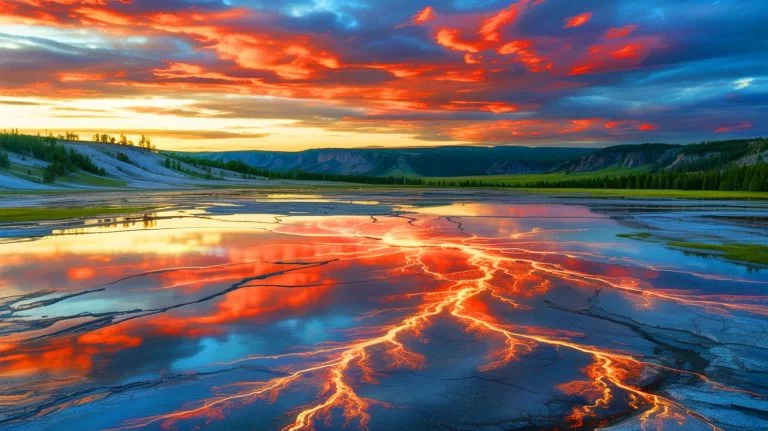| IN A NUTSHELL |
|
Yellowstone National Park, renowned for its breathtaking landscapes and geothermal features, harbors a more intense seismic activity beneath its surface than previously thought. Recent advancements in artificial intelligence have unveiled thousands of previously undetected earthquakes, reshaping our understanding of the region’s geological dynamics. Researchers have utilized AI to analyze seismic data, revealing nearly 86,000 earthquakes over a span of 15 years. This groundbreaking discovery exceeds past estimations and sheds light on seismic swarms along immature fault lines. The implications of these findings could significantly impact safety measures and geothermal energy development in the area.
Understanding Seismic Swarms
Seismic swarms are clusters of small earthquakes occurring in a confined area over a brief period. Unlike aftershocks, they do not follow a mainshock and often signal unique geological activities, such as fluid movements beneath the Earth’s surface. These swarms are frequently associated with volcanic regions, where magma and groundwater interact with surrounding rocks.
In Yellowstone, seismic swarms have been detected along immature fault lines, which, due to their roughness, encourage such activity. This discovery enhances our comprehension of deep geological processes and aids in predicting potential volcanic eruptions. By studying these swarms, scientists can better anticipate geological changes and identify potential risk zones in other volcanic regions worldwide.
The Role of AI in Seismology
Artificial intelligence has revolutionized the field of seismology by enabling rapid analysis of vast amounts of seismic data. This technology can detect earthquakes that are too small or occur too close together in time to be identified manually. AI’s application has ushered in a new era in earthquake studies, providing insights previously hidden to human observation.
By employing machine learning algorithms, researchers can identify patterns and correlations within historical data that were previously invisible. This approach has resulted in a tenfold increase in the number of recorded earthquakes beneath Yellowstone. As AI technology continues to advance, it is expected to become more prevalent, fundamentally transforming our global understanding of seismic activity.
Implications for Safety and Energy Development
The newly discovered seismic activity has significant implications for safety measures and geothermal energy development in Yellowstone. Understanding the precise nature and distribution of these earthquakes allows for improved monitoring and risk assessment. This can lead to enhanced safety protocols and better preparedness for potential geological events.
Moreover, the findings open possibilities for geothermal energy exploitation. By gaining a deeper understanding of the geothermal dynamics in Yellowstone, scientists and energy developers can explore sustainable energy solutions. This could pave the way for innovative approaches to harnessing geothermal energy while ensuring environmental preservation and safety.
Innovative Approaches in Fault Analysis
Researchers have employed fractal models to characterize the roughness of fault lines, an innovative approach that could be applied to other volcanic regions. This method offers a new lens through which to examine the complex interactions between geological structures and seismic activity. By understanding the intricacies of fault lines, scientists can better predict where seismic swarms might occur and their potential impacts.
The application of fractal modeling in fault analysis represents a significant advancement in geoscience. It provides a more nuanced understanding of fault dynamics, contributing to the broader field of earthquake prediction and risk mitigation.
As our understanding of the geological underpinnings of Yellowstone continues to evolve, the integration of artificial intelligence and innovative research methods offers promising new avenues for exploration. How might these technological advancements shape our future interactions with other volcanic regions around the world?
Did you like it? 4.6/5 (24)






Wow, 86,000 earthquakes?! That’s mind-blowing! 🤯
How does AI even find these hidden earthquakes? Seems like magic to me! 🧙♂️
I wonder if this AI can be used in other volcanic regions too?
Sounds like it could be dangerous. Are we safe visiting Yellowstone?
I’m skeptical. How reliable is this AI technology, really?
This could revolutionize geothermal energy. Exciting times ahead!
Great article! Thanks for sharing this breakthrough in seismology.
86,000 is a huge number! Why were these earthquakes hidden for so long?